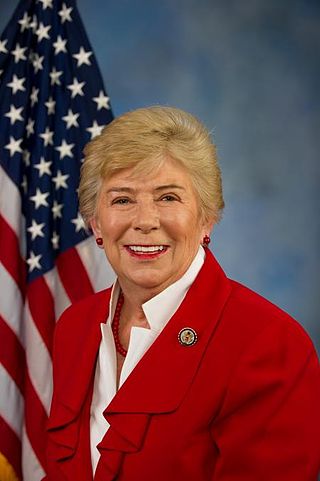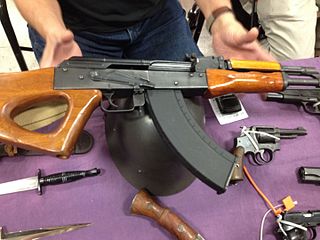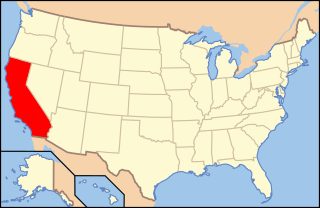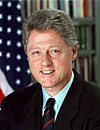
The National Rifle Association of America (NRA) is a gun rights advocacy group based in the United States. Founded in 1871 to advance rifle marksmanship, the modern NRA has become a prominent gun rights lobbying organization while continuing to teach firearm safety and competency. The organization also publishes several magazines and sponsors competitive marksmanship events. According to the NRA, it had nearly 5 million members as of December 2018, though that figure has not been independently confirmed.

In the United States, assault weapon is a controversial term used to define firearms with specified characteristics. The definition varies among regulating jurisdictions, but usually includes semi-automatic firearms with a detachable magazine, a pistol grip, and sometimes other features, such as a vertical forward grip, flash suppressor, or barrel shroud. Certain firearms are specified by name in some laws that restrict assault weapons. When the now-defunct Federal Assault Weapons Ban was passed in 1994, the U.S. Department of Justice said, "In general, assault weapons are semiautomatic firearms with a large magazine of ammunition that were designed and configured for rapid fire and combat use." The commonly used definitions of assault weapons are under frequent debate, and have changed over time.

The Brady Handgun Violence Prevention Act, often referred to as the Brady Act or the Brady Bill, is an Act of the United States Congress that mandated federal background checks on firearm purchasers in the United States, and imposed a five-day waiting period on purchases, until the National Instant Criminal Background Check System (NICS) was implemented in 1998. The act was appended to the end of Section 922 of title 18, United States Code. The intention of the act was to prevent persons with previous serious convictions from purchasing firearms.

The Gun Control Act of 1968 is a U.S. federal law that regulates the firearms industry and firearms ownership. Due to constitutional limitations, the Act is primarily based on regulating interstate commerce in firearms by generally prohibiting interstate firearms transfers except by manufacturers, dealers and importers licensed under a scheme set up under the Act.

Carolyn McCarthy is an American politician who served as the U.S. representative for New York's 4th congressional district from 1997 to 2015. She is a member of the Democratic Party.

Gun politics within American politics is defined by two primary opposing ideologies about civilian gun ownership. Those who advocate for gun control support increased regulation of gun ownership; those who advocate for gun rights oppose increased restriction of gun ownership. These groups often disagree on the interpretation of laws and court cases related to firearms and of the effectiveness of firearms regulation on crime and public safety. It is estimated that U.S. civilians own 393 million firearms, and that 40% to 42% of the households in the country have at least one gun. The U.S. has by far the highest estimated number of guns per capita in the world, at 120.5 guns for every 100 people.

Brady: United Against Gun Violence is an American nonprofit organization that advocates for gun control and against gun violence. It is named after James "Jim" Brady, who was permanently disabled and later died in 2014 as a result of the Ronald Reagan assassination attempt of 1981, and his wife Sarah Brady, who was a chairwoman of the organization from 1989 until her death in 2015.
The Violence Policy Center (VPC) is an American nonprofit organization that advocates for gun control.

The Protection of Lawful Commerce in Arms Act (PLCAA) is a U.S law, passed in 2005, that protects firearms manufacturers and dealers from being held liable when crimes have been committed with their products. Both arms manufacturers and dealers can still be held liable for damages resulting from defective products, breach of contract, criminal misconduct, and other actions for which they are directly responsible. They may also be held liable for negligent entrustment when they have reason to know a gun is intended for use in a crime.

Gun show loophole is a political term in the United States referring to the sale of firearms by private sellers, including those done at gun shows, that do not require the seller to conduct a federal background check of the buyer. This is also called the private sale exemption. Under federal law, any person may sell a firearm to a federally unlicensed resident of the state where they reside, as long as they do not know or have reasonable cause to believe that the person is prohibited from receiving or possessing firearms.
Proposition B in Missouri was a failed 1999 ballot measure that would have required local police authorities to issue concealed weapons permits to eligible citizens. It was a contentious issue and was narrowly rejected at the time by the electorate, but the legislature later approved similar legislation in 2003.

Gun laws in California regulate the sale, possession, and use of firearms and ammunition in the state of California in the United States.
George W. Bush's political positions have been expressed in public statements, and through his actions in the executive roles of governor of Texas and president of the United States.

Rocky Mountain Gun Owners (RMGO) is a 501(c)(4) non-profit gun rights advocacy group in Colorado, United States.

The Public Safety and Recreational Firearms Use Protection Act, popularly known as the Federal Assault Weapons Ban (AWB), was a subsection of the Violent Crime Control and Law Enforcement Act of 1994, a United States federal law which included a prohibition on the manufacture for civilian use of certain semi-automatic firearms that were defined as assault weapons as well as certain ammunition magazines that were defined as large capacity.

The United States Undetectable Firearms Act of 1988 makes it illegal to manufacture, import, sell, ship, deliver, possess, transfer, or receive any firearm that is not as detectable by walk-through metal detection as a security exemplar containing 3.7 oz of steel, or any firearm with major components that do not generate an accurate image before standard airport imaging technology.
Assault weapons legislation in the United States refers to bills and laws that define and restrict or make illegal the manufacture, transfer, and possession of assault weapons. How these firearms are defined and regulated varies from jurisdiction to jurisdiction; generally, this constitutes a list of specific firearms and combinations of features on semiautomatic firearms. Assault rifles are defined by federal law in the National Firearms Act (NFA) of 1934. The NFA specifically defines an assault rifle as one that can fire more than one round per trigger pull, i.e., capable of selective fire.
After the Sandy Hook Elementary School shooting, multiple gun laws were proposed in the United States at the federal and state levels. The shooting renewed debate about gun control. The debates focused on requiring background checks on all firearm sales, and on passing new and expanded assault weapon and high-capacity magazine bans.

The Assault Weapons Ban of 2013 was a bill introduced in the 113th United States Congress as S. 150 by Senator Dianne Feinstein, D-CA, on January 24, 2013, one month after the Sandy Hook Elementary School shooting. It was defeated in the Senate on April 17, 2013 by a vote of 40 to 60.

Public opinion on gun control in the United States has been tracked by numerous public opinion organizations and newspapers for more than 20 years. There have also been major gun policies that affected American opinion in the 1990s. Throughout these polling years there are different gun control proposals that show promise for bipartisan action. Over the years listed there have been major tragedies that have affected public opinion. Most of the tragedies are school shootings. There have also been a growth in states around the United States taking more drastic measures on gun control. As of late February and early March 2018, a majority of Americans support stricter gun laws, including wide support for universal background check and mandatory waiting periods for gun purchases and, adding felons and mental illness patients to background check systems, and prohibiting sales of guns to persons under 21 years old.













